The forest gives life to abundant fauna and flora, which lends to the survival of the Bunun, the Bunun also developed ways to co-exist with the environment, being grateful and respectful of what nature has given them. Dahu took Lowking hiking along the trail to learn about the applications of the plants as well as share the Bunun concept of life.

According to the Bunun world view, there were two suns in the sky, taking turns to shine, hence the 24-hour sunshine all year round. The heat made it difficult to grow any crops. One day, a couple came to work on their farmland. They placed their baby under the shade of a Formosan Palm tree and set to work, but when they returned, the baby was nowhere to be seen. Instead, a Taiwan japalure appeared where the baby used to be, and they came to the shocking realization that the baby had been sundried into a lizard. The couple was very sad, and the enraged husband embarked on a journey eastward with his older son, determined to shoot the sun down.
After hiking for a number of years, they finally reached closer to the sun. The husband held up the bow and arrow and shot the sun in the eye. The sky darkened immediately. The furious fallen sun demanded at the husband, “why shoot at me?” The husband answered that the heat deprived him of his child, and made it impossible for people to plant crops or to make a living. Upon hearing the reply, the suns became very compassionate. The fallen sun turned into the moon, and made a pact with them to always follow the changes and phases of the moon for important rituals, and that the moon must be notified when they clear new farmlands. Therefore, the Bunun people began observing the phases of the moon and developed the “lunar calendar”. Prior to clearing the farmland, they will place two pieces of wood on the ground in the shape of the moon and perform a ritual, praying for a bountiful harvest of crops as well as demonstrating that this land has made a pact with the moon.
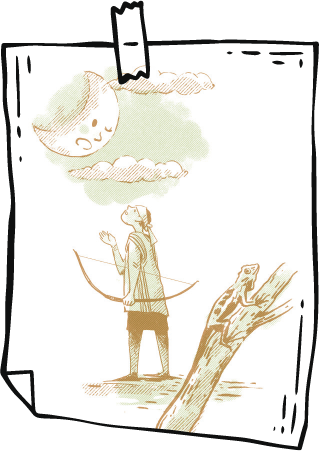

The millet field at the back of the Mamahav base has some companion crops, such as pumpkins and pigeon peas. With the millet already harvested, the land will rotate to grow sweet potatoes, black turtle beans, and anchun beans, a kind of bean traditionally grown by the Bunun people. Beans are very good supplements for protein during non-hunting seasons, and diverse crop rotation can help with plant diseases and pest control.

Without water bottles in the past, whenever the Bunun hunt in the mountains, they rely on streams or water-collecting plants for water supply. Laochi palm is very useful for collecting water, at 3 to 5 meters in length, it can collect up to 600ml of water, and when you chop off the end of the laochi palm, water will start dripping. When in mid or higher altitudes without streams nearby, sometimes the sambar will leave dents on the ground after rolling around, these dents will collect some water and be used as water supply.
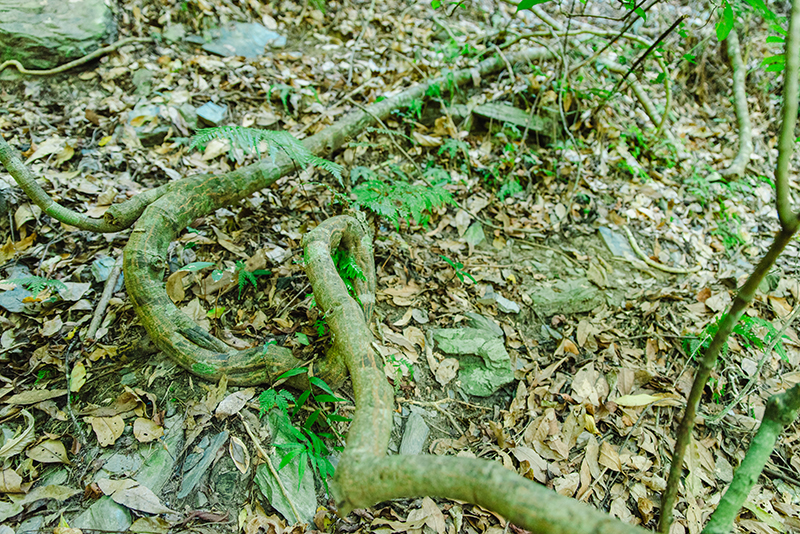

Dahu cautions us to beware when we sneeze in the mountains. We must stop to take a rest and allow the nearby spirits to pass through and leave first.


 Collect 10 to 15 Formosan Palm soft shoots in the mountain. Choose the ones with leaves yet to spread.
Collect 10 to 15 Formosan Palm soft shoots in the mountain. Choose the ones with leaves yet to spread.
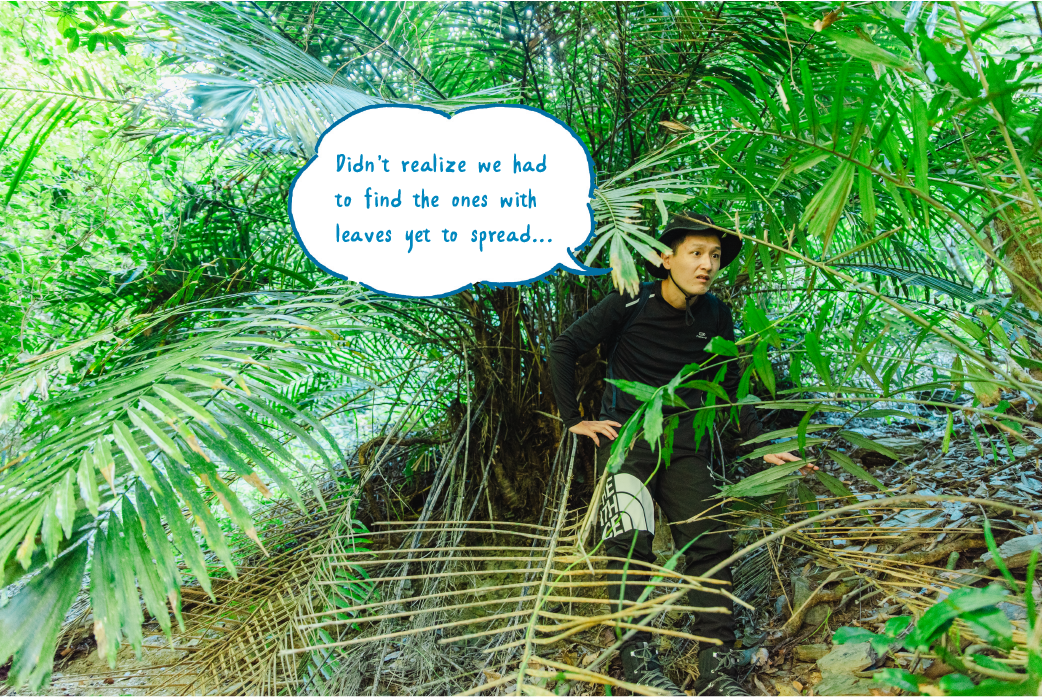
 Tap on every bundle of Formosan Palm to spread out the leaves. Tear off the wings along the center vein (leaves on both sides are lighter in weight, hence the name “wings”), leaving only the tougher center part. The wings can be used to make a smaller broom to be used on softer surfaces.
Tap on every bundle of Formosan Palm to spread out the leaves. Tear off the wings along the center vein (leaves on both sides are lighter in weight, hence the name “wings”), leaving only the tougher center part. The wings can be used to make a smaller broom to be used on softer surfaces.
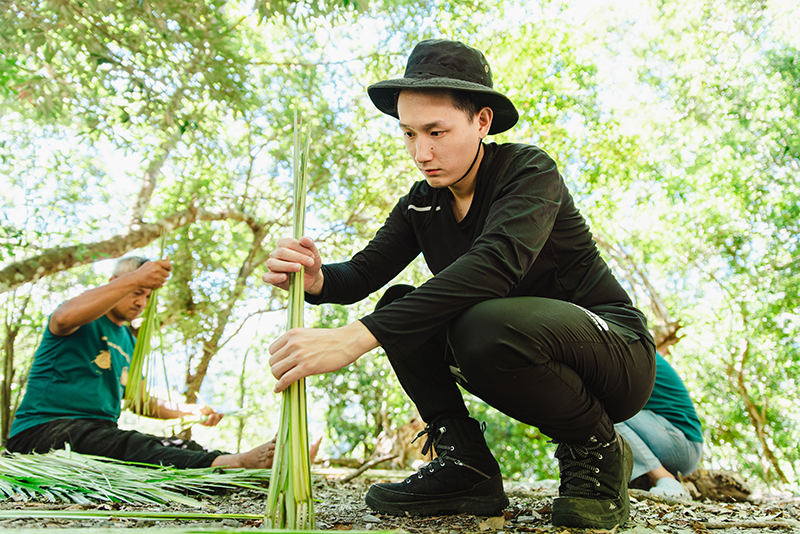
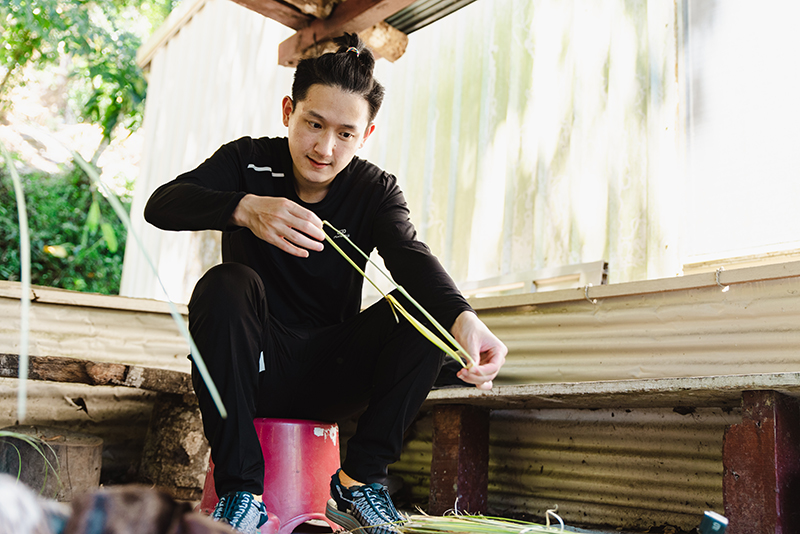
 Dry the leaves until they turn brown.
Dry the leaves until they turn brown.
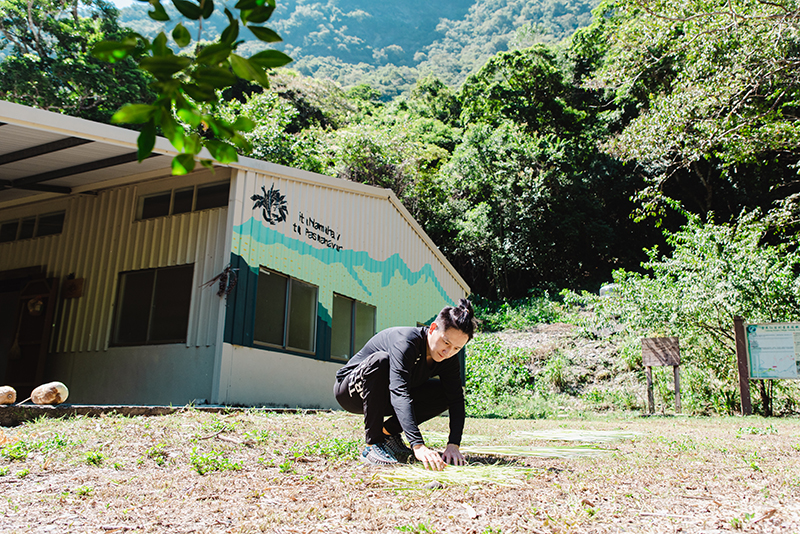
 Bundle up, measure up to elbow length and chop off excess bits.
Bundle up, measure up to elbow length and chop off excess bits.
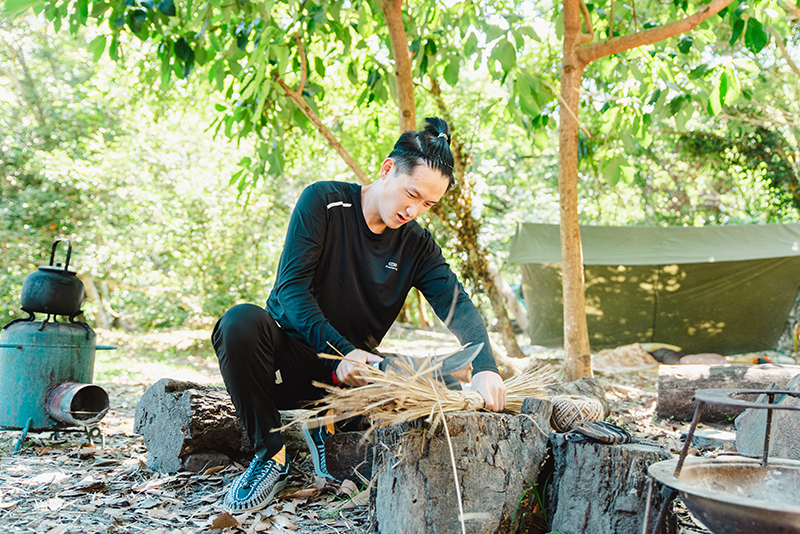
 Stick a wooden handle into the Formosan Palm leaf bundle, and tie them up with a piece of hemp cord. The side of the wooden handle wrapped with Formosan Palm leaves must be inserted into the tenon so that the Formosan Palm can spread wider and fluffier.
Stick a wooden handle into the Formosan Palm leaf bundle, and tie them up with a piece of hemp cord. The side of the wooden handle wrapped with Formosan Palm leaves must be inserted into the tenon so that the Formosan Palm can spread wider and fluffier.
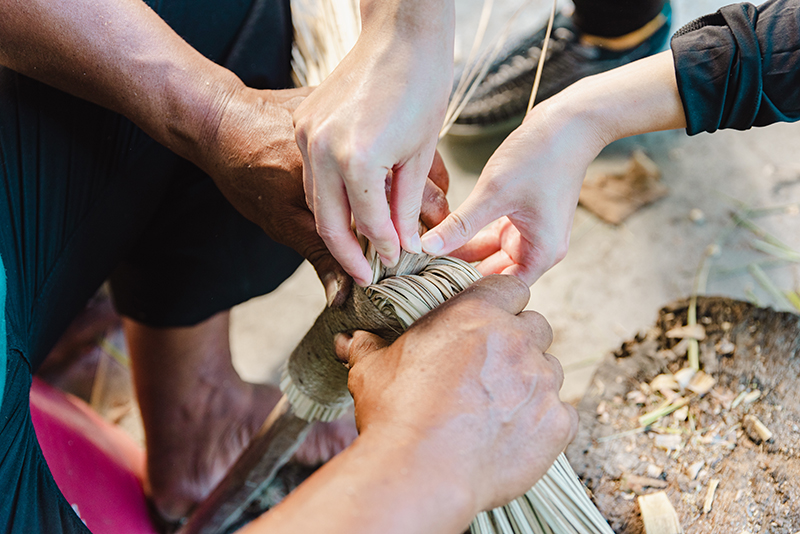
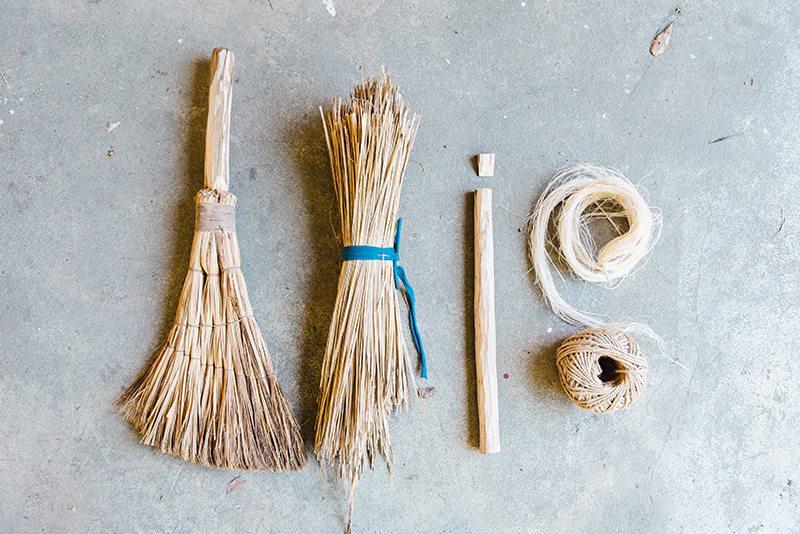
 Tie in bundles and in even bundle numbers for each row, the numbers increasing as you go along, making for a prettier finish.
Tie in bundles and in even bundle numbers for each row, the numbers increasing as you go along, making for a prettier finish.
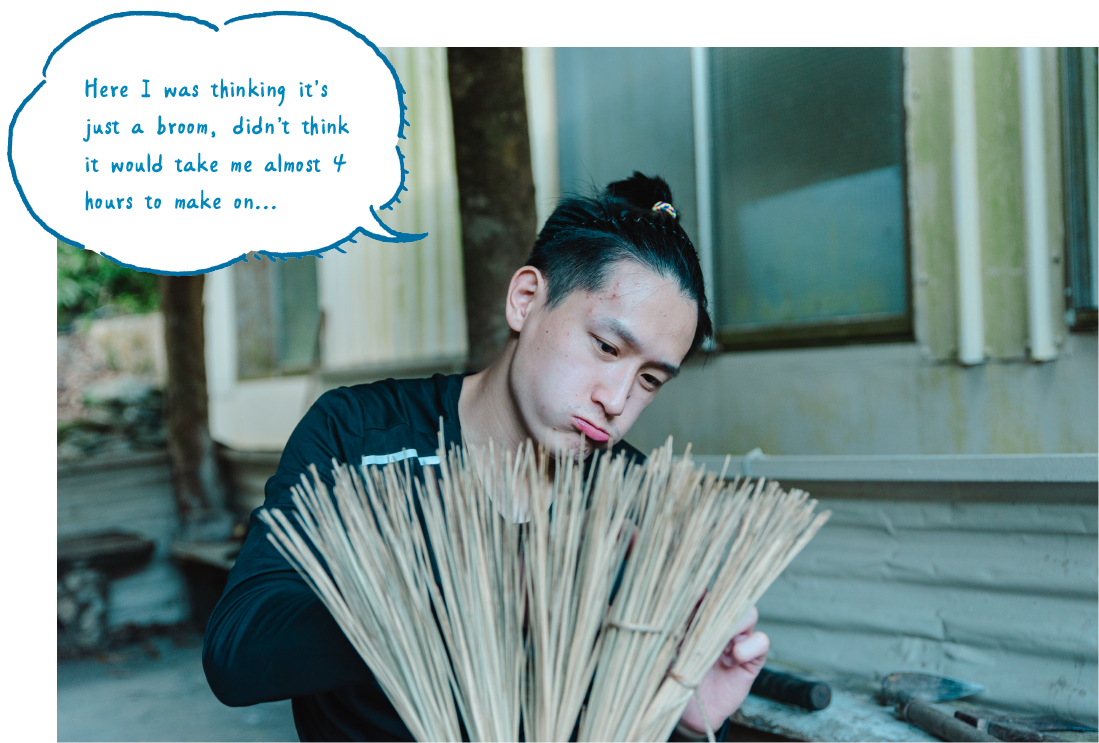
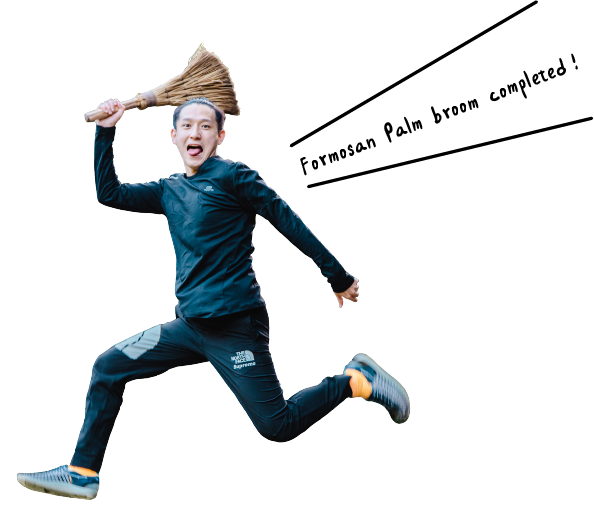
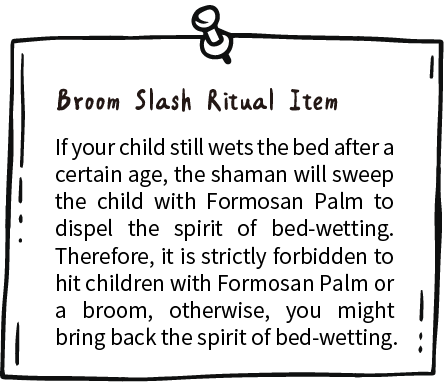

When starting the fire that night, Dahu held a piece of wood cut from the Taiwan Red Pine, and explained what that little piece of wood meant.
“Sang*” is an important plant to the Bunun people for starting fire and life, we can see from the Bunun language the importance of “sang”. The process of the tree beginning to produce resin is known as min ho mi sang, min is to “become”. Min may make you feel uncomfortable, just like when you chop at a tree, the tree releases resin as a mechanism for self-protection, but this process also helps the Bunun to make torches that will light the night.
*sang means “fire starter” in the Bunun language. asang means “settlement”. isang means “breath of life”.
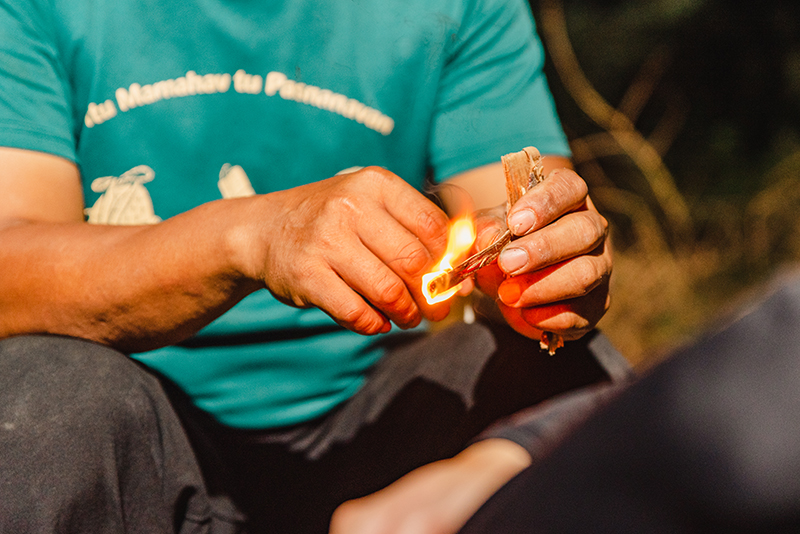
 The Bunun is all about min, we don’t tell you what we want you to become, it’s not like being in class and the teacher has a question with a standard answer. We want you to experience it for yourself and see what you can become. The process of min may be tough, and you may get hurt along the way, but it’s the unique min experience of every individual that shapes our differences.
The Bunun is all about min, we don’t tell you what we want you to become, it’s not like being in class and the teacher has a question with a standard answer. We want you to experience it for yourself and see what you can become. The process of min may be tough, and you may get hurt along the way, but it’s the unique min experience of every individual that shapes our differences.





